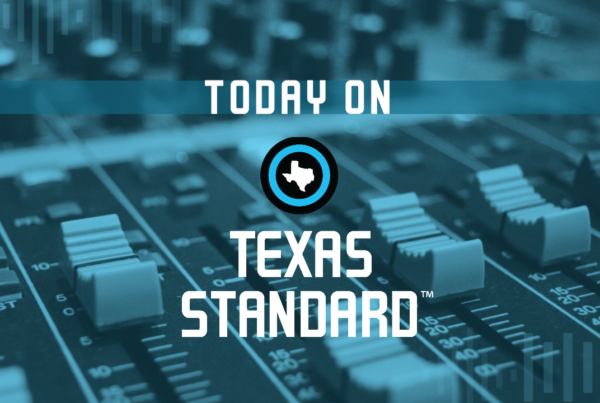If you’re a company with 100 employees or more and you’re planning layoffs, you have to alert the government and give your employees a 60 day notice under a law known as the WARN Act.
It was designed to give workers time to adjust to the news about layoffs, but these notices can also reflect “structural changes” in the economy, according to the Dallas Federal Reserve.
Luis Torres is a senior business economist with the Dallas Fed who recently co-authored some research looking at WARN notices and mass layoffs here in Texas.
He joined Texas Standard to explain what this uptick in WARN notices means for the Lone Star State’s economy. Listen to the interview above or read the transcript below.
This transcript has been edited lightly for clarity:
Texas Standard: Well, as you track these WARN layoff notices, are you seeing any patterns?
Yes, we are. We’re seeing a pattern where we’re seeing more white collar, science professionals and technical services jobs, where they’re coming from. These are sectors that expanded greatly during the pandemic. Also, many of these sectors where we’re seeing that increasing WARN notices are interest rate sensitive and are harmed by declining business investment and capital expenditures.
Well, there are a couple of things that we should talk about when it comes to some of those macroeconomic factors. But I want to ask about whether or not there’s a geographic breakdown here. I mean, you touched on some of the industries that seem to be involved. But as you look at a map of Texas, does it seem like there are certain regions that are harder hit by layoffs?
Yes, there are. And it’s Austin. Austin accounted for like about 20% of the total number of WARN layoffs in the state during the first ten months of 2023. Despite that, they just represent around 10% of employment in the state. So it’s increasing.
Very interesting. Now, I know that there was just recently a report suggesting that inflation is easing back a bit. Will that be a factor when it comes to future layoffs and the health of these industries that have been most hard hit?
So if you’re in an interest rate sensitive sector and interest rates start to decrease, well definitely that’s a benefit for your sector. Example: the housing market. One sector we’ve seen that’s a major sensitive sector and we’ve seen the effects here in the Texas housing market.
So, yes, it’s interest rates. As inflation decreases, nominal interest rates should also follow suit. And that’s a positive for those sectors that are sensitive to the changes in interest rates.
Well, data from the Texas Workforce Commission suggests that the first year of the pandemic, we’re talking 2020 here, Texas had something like 200,000 WARN notices about mass layoffs, which seems like quite a lot. And then there was a huge dip. Any explanation for why that would be?
So it reflects the economy, right? So you mentioned earlier, you talked about how WARN notices can signal structural changes. But they can also signal cyclical changes – the ups and downs in the economy.
So what happened during the pandemic is that the negative shock during the first two months of the year – starting the months of 2020, especially March and April – we saw an increase in unemployment, a decrease in employment. And that also showed up in the WARN layoffs – that negative shock that affected the Texas economy that was there was due to the pandemic.
Well, now you look at the most recent batch of WARN notices for covering the past year as an economist. What does it tell you about the general direction of the Texas economy?
So we’re retreating to pre-pandemic levels. After the pandemic, you know, naturally you have the big increasing WARN numbers. But think about what happened in 2021 and 2022, and currently the strength of the Texas economy – employment growing in a very high rate, demand for labor… All these things were positive. And that also was reflected in the WARN notices reaching historical lows.
So what are we seeing now? We’re seeing an increase in the WARN notices and we’re coming back to pre pre-pandemic levels. And what we expect is an increase in unemployment.
Well, now you mentioned expecting an increase in the unemployment rate. Right now it is at 4% roughly. So if I understand you correctly, as we enter 2024, should we expect that number to be on the rise?
So, yes, if these WARN notices continue and the economy continues to slow down, that could cause the unemployment rate to increase.
Right now you mentioned it’s at 4.1% – the employment rate. But think about how much was it a year ago. It was lower, maybe 3.9%. But we see that increase in the unemployment rate also as we see those increases also in WARN notices.













